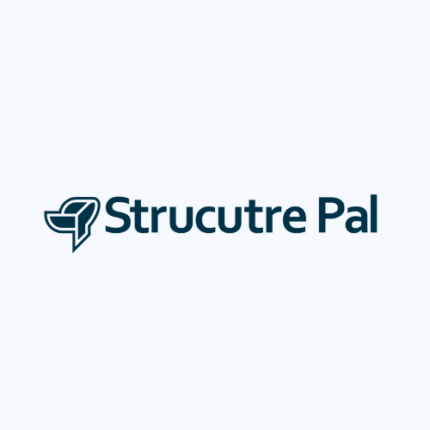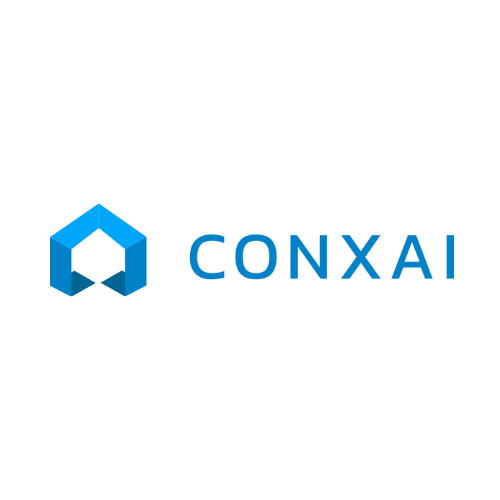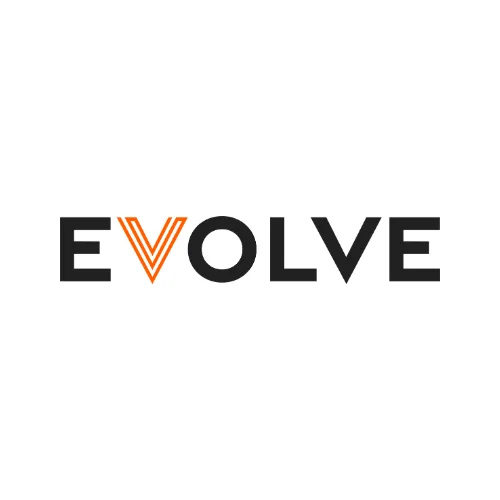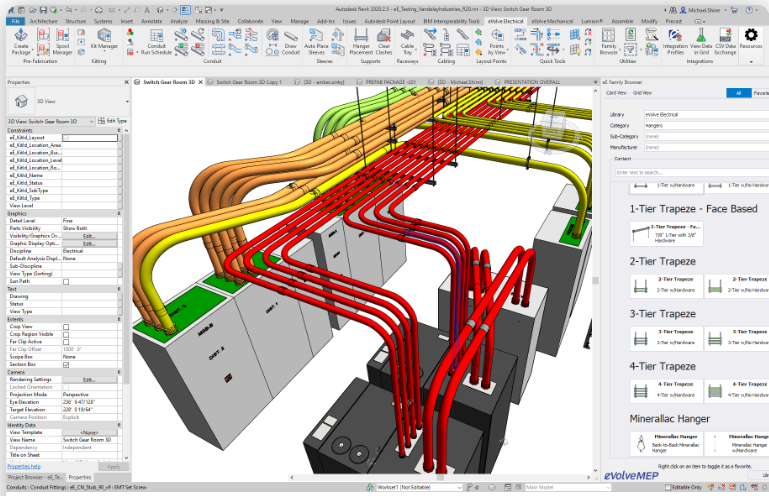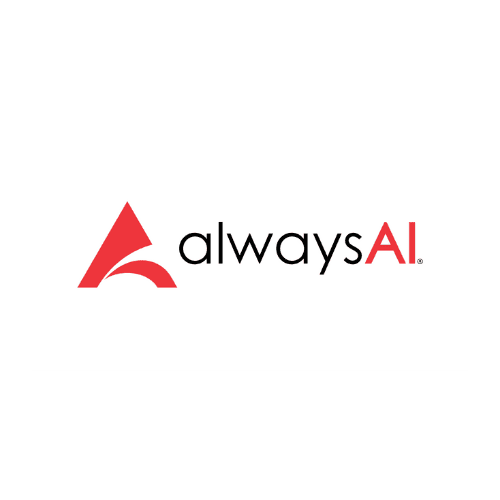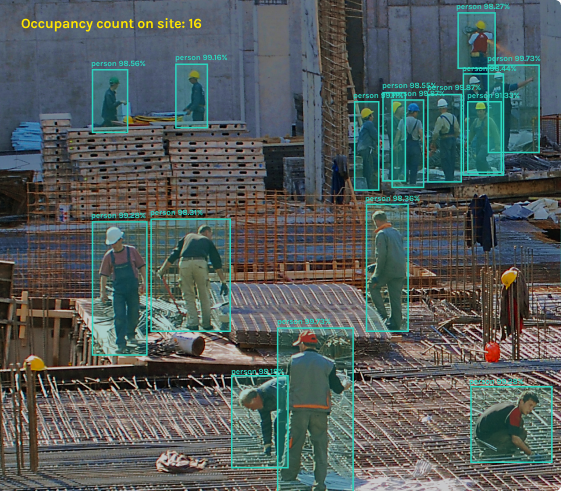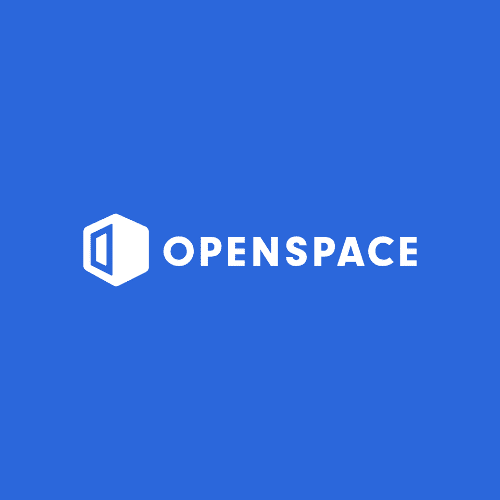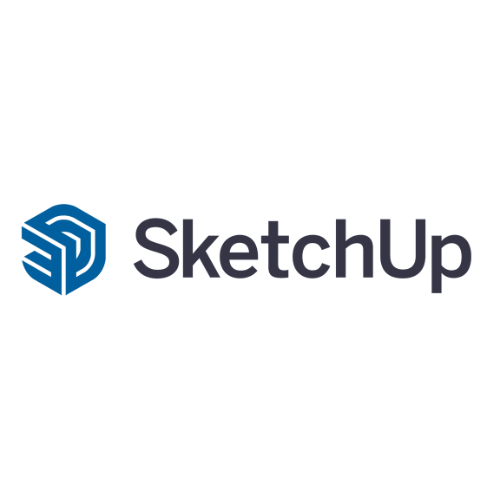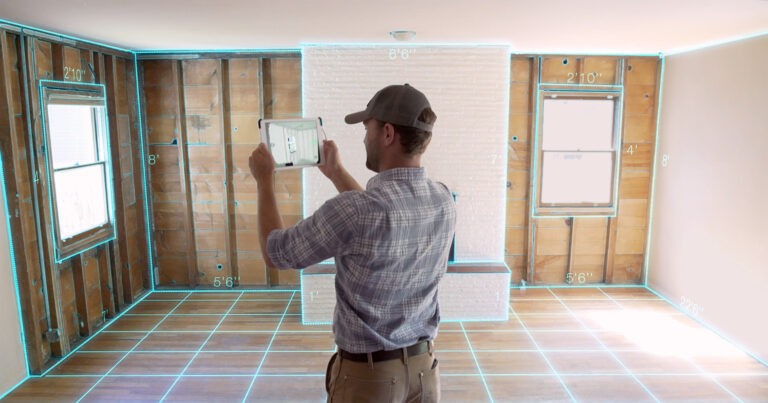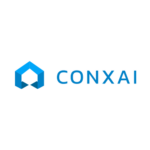

CONXAI
Category: Artificial intelligence (AI)
CONXAI is an AI platform specifically designed for the construction industry. It analyzes various data sources, like images, documents, and sensor data, to provide valuable insights and automate tasks. This helps construction companies improve safety, productivity, and quality control, while also reducing risks and costs. CONXAI aims to make construction more efficient and data-driven by turning complex data into actionable knowledge.
0
People watching this product now!
Key Information
| Discipline | , , |
|---|---|
| Project Phase | , |
CONXAI: At a Glance
CONXAI is more than just another software solution; it's a comprehensive platform built on the principles of Construction 4.0. Its core strength lies in its ability to seamlessly integrate with existing systems, analyze diverse data sources, and provide actionable insights without requiring specialized coding skills. AI is utilized in the preconstruction phase in the form of predictive analytics, machine learning, and natural language processing.
Understanding the CONXAI Toolset
CONXAI's platform offers a suite of AI-powered tools designed to address specific challenges in the construction industry. CONXAI was developed to address the challenges in effectively managing and curating large unstructured datasets generated during different stages of construction projects in the Architecture, Engineering, and Construction (AEC) industries. These tools include:
- SiteLens: This tool analyzes photos and videos from construction sites to augment site supervision, generate performance insights, and automate reporting. SiteLens also offers a work quality evaluation smartphone app that allows on-site workers to easily capture work product progress and quality. Images are uploaded and SiteLens performs AI-powered computer vision analysis of work quality, based on objective measures defined by standards bodies, job specifications, and accumulated expert experience.
- DocNostic: This tool automates construction document workflows to ensure conformity, consistency, and compliance. DocNostic ensures semantic accuracy in extraction and agentic automation enables real-time workflows.
Existing AI approaches often fail to deliver ROI due to limitations such as:
- Expert systems: Not self-taught, intolerant of data variation for new use cases, and require significant manual tuning.
- Neural AI: Lacks human-like reasoning, requires extensive datasets and labeling effort, and does not incorporate domain knowledge.
- Traditional AI approaches: Time-consuming and expensive to build and maintain, lack cross-project portability, and lack multi-use case scalability.
Key Features
CONXAI's platform boasts a range of features designed to enhance efficiency, transparency, and knowledge management in construction projects. Some of the key features include:
- No-Code AI: Empowers users to build and modify AI-powered solutions without requiring software or AI skills.
- Explainable AI (XAI): Provides transparency into the AI's decision-making process, increasing trust and understanding.
- Scalability: Adapts to the needs of individual projects, multiple jobs, or enterprise-wide deployments.
Key Benefits
Some of the key benefits derived from CONXAI's features include:
- Transparency: CONXAI makes hidden or hard-to-find information instantly available, fostering trust and collaboration among stakeholders. This improved information access fosters trust, collaboration, and Integrated Project Delivery (IPD) success.
- Automation: Automates time-consuming tasks such as report generation and document processing, reducing errors and freeing up project teams for higher-value work. Time and errors in reporting and documentation are greatly reduced, and best practices encoded in the workflow automation logic enhance control, consistency, and compliance.
- Knowledge Management: Facilitates knowledge discovery and enables continuous learning by leveraging historical and project lifecycle data. Knowledge discovery becomes easier and faster, and intelligent use of historical and project lifecycle data enables continuous learning.
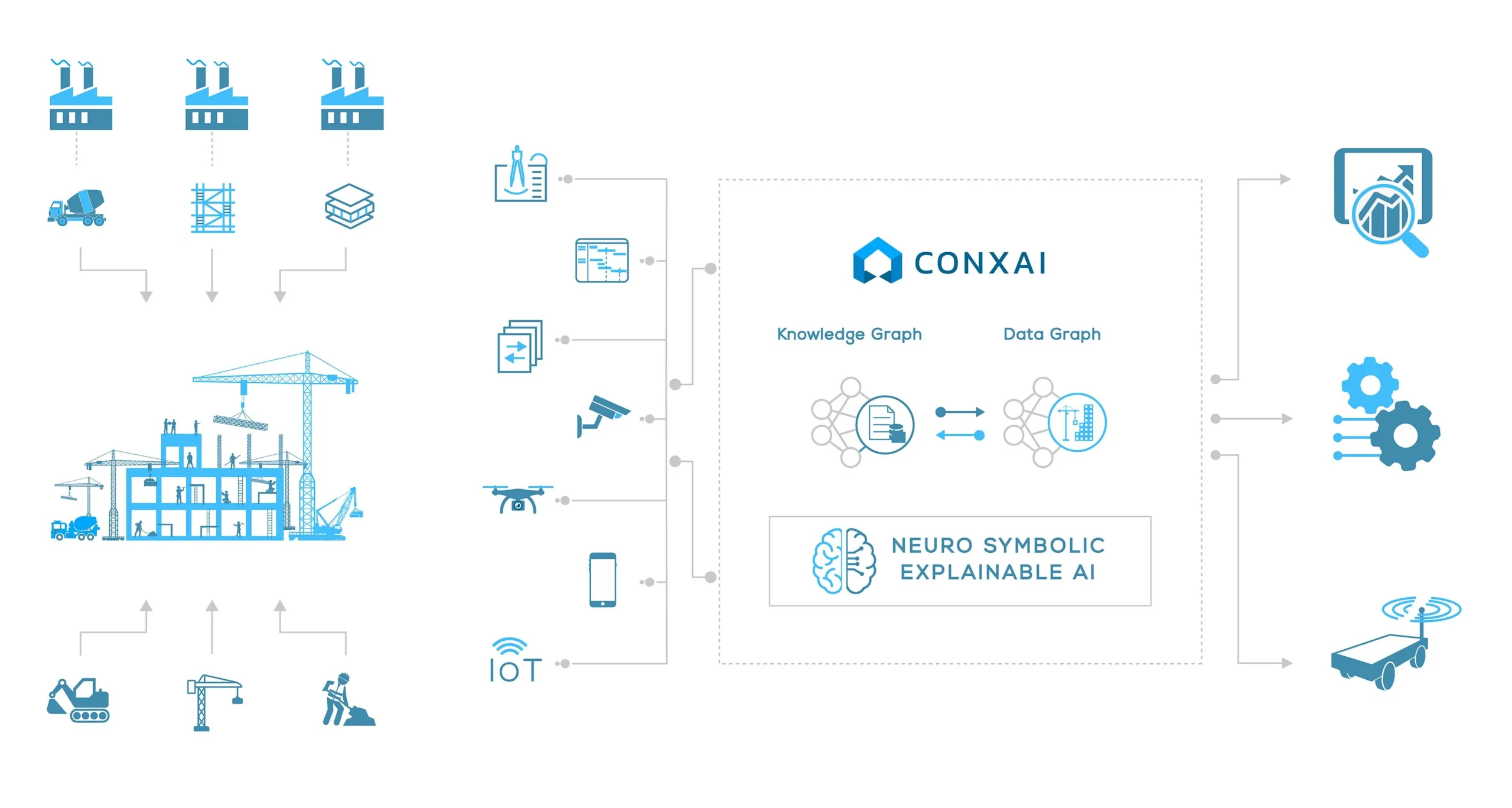
How CONXAI Works
CONXAI's platform operates on a neuro-symbolic AI architecture that combines the strengths of expert systems and neural networks. This approach allows the AI to learn by understanding, leveraging human-like reasoning to deliver accurate results with smaller training datasets, which is a significant advantage over traditional AI approaches.
The platform's no-code interface enables users to build custom AI solutions by dragging and dropping pre-built AI blocks. These blocks leverage domain-specific ontologies to simplify use-case creation and ensure accurate data extraction and analysis.
CONXAI's AI model is accessible through an API, allowing for seamless integration with existing systems. The platform also offers a user-friendly dashboard for managing cameras, viewing footage, performing analytical searches, and ensuring GDPR compliance.
CONXAI tackles the fragmented construction technology landscape by creating a connected source of truth that streamlines the "Plan-Document-Control-Act (PDCA)" journey.
To illustrate how CONXAI works, consider a use case for quality control:
- A worker on-site uses the SiteLens smartphone app to capture images of completed work.
- The images are uploaded to the CONXAI platform, where the AI analyzes them to identify potential defects or deviations from specifications.
- The AI generates a report highlighting any issues found, along with their location and severity.
- The report is automatically shared with relevant stakeholders, such as the site supervisor or project manager.
- Stakeholders can review the report, take necessary actions, and track the resolution of any quality issues.
This streamlined process ensures that quality control is efficient, consistent, and data-driven, leading to improved project outcomes.
Best Suited Projects
CONXAI's platform is particularly well-suited for construction projects that:
- Generate large volumes of unstructured data (photos, videos, documents, etc.).
- Require efficient and accurate data analysis for informed decision-making.
- Seek to automate time-consuming tasks and workflows.
- Prioritize transparency and collaboration among stakeholders.
CONXAI can be used to improve safety, productivity, quality, and asset performance, as well as reduce waste and overall project risks. It can also be used by contractors, manufacturers, and software vendors. Project management software solutions with AI capabilities are gaining traction, as these tools tackle traditionally time-consuming tasks, enabling teams to focus on strategic decision-making rather than tedious routine work.
Integrations
CONXAI integrates with other systems through APIs, enabling interoperability with existing construction technology solutions. CONXAI offers both API integration and dashboard functionalities. For example, CONXAI partners with Veea, a company that redefines and simplifies secure edge computing. VeeaHub® Smart Computing Hubs™ integrate a full range of connectivity options, application processing power, and a full security stack to form an elastic edge computing platform with a dynamic connectivity and application mesh that can easily be deployed and centrally managed from the cloud. CONXAI's use of Amazon EKS allows for scalability and cost-efficiency.
ROI and Key Metrics
CONXAI's platform has the potential to deliver significant ROI through:
- Reduced Costs: Automating tasks, minimizing errors, and preventing rework can lead to substantial cost savings.
- Increased Productivity: Streamlining workflows and providing real-time insights can boost productivity and efficiency.
- Enhanced Safety: Improved site supervision and risk assessment can contribute to safer working environments.
- Reduced Knowledge Loss: Capturing and leveraging project data can prevent knowledge loss and enable continuous learning.
Key metrics for measuring CONXAI's ROI include:
- Customer Satisfaction (CSAT) and Net Promoter Score (NPS): Understanding how AI and automation impact customer satisfaction is fundamental.
- Resolution Time and First Contact Resolution (FCR): Efficiency gains are a primary objective of AI and automation.
- Cost Reduction and Return on Investment (ROI): One of the most critical metrics for businesses is the bottom line.
- Personalization Effectiveness: The AI and automation tools of today have the ability to analyze language, intuit customer needs, and prioritize complex tasks.
- Omnichannel Consistency: For businesses operating across various channels, ensuring a consistent customer experience is crucial.
- Accuracy and Quality of AI Responses: The reliability of AI-driven responses is a critical metric.
- Data Privacy and Security Compliance: In an age where data privacy is paramount, ensuring compliance with regulations is crucial.
To effectively measure ROI, it's crucial to establish clear objectives and KPIs before implementing CONXAI's platform. Regularly track performance metrics and compare them to baseline data to assess the platform's impact on key areas of your business. Measuring AI ROI requires a shift in thinking from traditional financial results to a broader understanding of strategic value.
Conclusion
CONXAI is poised to become a significant player in the ongoing transformation of the construction industry. Its comprehensive toolset, focus on knowledge management, and commitment to explainable AI offer significant advantages for construction professionals seeking to enhance efficiency, transparency, and data-driven decision-making. The platform's no-code approach democratizes access to AI, empowering users of all technical backgrounds to leverage its capabilities. By streamlining workflows, automating tasks, and facilitating knowledge transfer, CONXAI has the potential to significantly improve productivity, reduce costs, and enhance safety in construction projects.
However, CONXAI also faces challenges. Limited information on specific integrations, support resources, and detailed case studies may hinder wider adoption. Addressing these areas will be crucial for CONXAI to gain further traction in the market. Additionally, the company operates in a competitive landscape with alternative solutions vying for attention. CONXAI's success will depend on its ability to effectively communicate its value proposition, demonstrate tangible ROI, and continuously innovate to stay ahead of the curve.
Furthermore, CONXAI, like other venture-funded start-ups in the real estate industry, faces challenges in attracting and retaining top AI talent, competing with the compensation benchmarks of the tech industry. Overcoming these challenges will be essential for CONXAI to achieve mainstream success and solidify its position as a leader in the AI-powered construction revolution.
Alternative Products
eVolve MEP
eVolve MEP is a software solution specifically designed for mechanical, electrical, and plumbing (MEP) engineers in the construction industry. It streamlines the creation of 3D MEP models within Autodesk Revit, providing intelligent design tools, automating standard and repetitive tasks, and facilitating the generation of fabrication-ready content and construction documentation.
Always AI
AlwaysAI is a platform that simplifies the development and deployment of computer vision applications.
AlwaysAI aims to make computer vision accessible to construction companies without requiring deep AI expertise, enabling them to leverage the power of AI to improve safety, efficiency, and productivity on their projects.
OpenSpace
OpenSpace is a reality capture and AI-powered analytics platform for construction. It uses 360° cameras mounted on hard hats to automatically capture job site progress, creating a digital twin of the project. The platform then uses AI to analyze these images, providing insights into progress tracking, quality control, safety monitoring, and issue identification.
OpenSpace helps construction teams improve communication, reduce rework, and make data-driven decisions to keep projects on time and within budget.
SketchUp
SketchUp is a 3D modeling software widely used in architecture, interior design, landscape architecture, and related fields.It allows users to create 3D models of buildings, interiors, furniture, landscapes, and other objects using a combination of drawing tools, push-pull modeling, and a vast library of pre-made components.
Canvas
Canvas is a service that creates "editable, layered as-built models" for remodelers, architects, interior designers, and construction professionals.
It uses reality capture technologies to document existing conditions and then integrates that data with design models (BIM).
Essentially, Canvas drafts digital models of existing buildings, which can then be used for renovations, redesigns, or other construction projects.


